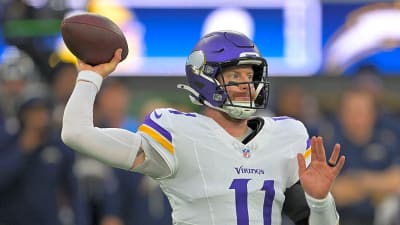- Home
- Quizzes
- My Quiz Activity
- Newsletters
- MY FAVORITES
- Add Sports/Teams
- SPORTS
-
NFL
- NFL Home
- Arizona Cardinals
- Atlanta Falcons
- Baltimore Ravens
- Buffalo Bills
- Carolina Panthers
- Chicago Bears
- Cincinnati Bengals
- Cleveland Browns
- Dallas Cowboys
- Denver Broncos
- Detroit Lions
- Green Bay Packers
- Houston Texans
- Indianapolis Colts
- Jacksonville Jaguars
- Kansas City Chiefs
- Las Vegas Raiders
- Los Angeles Chargers
- Los Angeles Rams
- Miami Dolphins
- Minnesota Vikings
- New England Patriots
- New Orleans Saints
- New York Jets
- New York Giants
- Philadelphia Eagles
- Pittsburgh Steelers
- San Francisco 49ers
- Seattle Seahawks
- Tampa Bay Buccaneers
- Tennessee Titans
- Washington Commanders
-
MLB
- MLB Home
- Athletics
- Arizona Diamondbacks
- Atlanta Braves
- Baltimore Orioles
- Boston Red Sox
- Chicago White Sox
- Chicago Cubs
- Cincinnati Reds
- Cleveland Guardians
- Colorado Rockies
- Detroit Tigers
- Houston Astros
- Kansas City Royals
- Los Angeles Angels
- Los Angeles Dodgers
- Miami Marlins
- Milwaukee Brewers
- Minnesota Twins
- New York Yankees
- New York Mets
- Philadelphia Phillies
- Pittsburgh Pirates
- San Diego Padres
- San Francisco Giants
- Seattle Mariners
- St. Louis Cardinals
- Tampa Bay Rays
- Texas Rangers
- Toronto Blue Jays
- Washington Nationals
-
NBA
- NBA Home
- Atlanta Hawks
- Boston Celtics
- Brooklyn Nets
- Charlotte Hornets
- Chicago Bulls
- Cleveland Cavaliers
- Dallas Mavericks
- Denver Nuggets
- Detroit Pistons
- Golden State Warriors
- Houston Rockets
- Indiana Pacers
- Los Angeles Clippers
- Los Angeles Lakers
- Memphis Grizzlies
- Miami Heat
- Milwaukee Bucks
- Minnesota Timberwolves
- New Orleans Pelicans
- New York Knicks
- Oklahoma City Thunder
- Orlando Magic
- Philadelphia 76ers
- Phoenix Suns
- Portland Trail Blazers
- Sacramento Kings
- San Antonio Spurs
- Toronto Raptors
- Utah Jazz
- Washington Wizards
-
NHL
- NHL Home
- Anaheim Ducks
- Boston Bruins
- Buffalo Sabres
- Calgary Flames
- Carolina Hurricanes
- Chicago Blackhawks
- Colorado Avalanche
- Columbus Blue Jackets
- Dallas Stars
- Detroit Red Wings
- Edmonton Oilers
- Florida Panthers
- Los Angeles Kings
- Minnesota Wild
- Montreal Canadiens
- Nashville Predators
- New Jersey Devils
- New York Islanders
- New York Rangers
- Ottawa Senators
- Philadelphia Flyers
- Pittsburgh Penguins
- San Jose Sharks
- Seattle Kraken
- St. Louis Blues
- Tampa Bay Lightning
- Toronto Maple Leafs
- Utah Mammoth
- Vancouver Canucks
- Vegas Golden Knights
- Washington Capitals
- Winnipeg Jets
- NCAAF
- NCAAM
- Olympics
- Boxing
- Entertainment
- Lifestyle
- Golf
- MMA
- Soccer
- Tennis
- Wrestling
- Sports Betting
- More Sports
- RESOURCES
- My Account
- YB on Facebook
- YB on Twitter
- YB on Flipboard
- Contact Us
- Privacy Policy
- Terms of Service
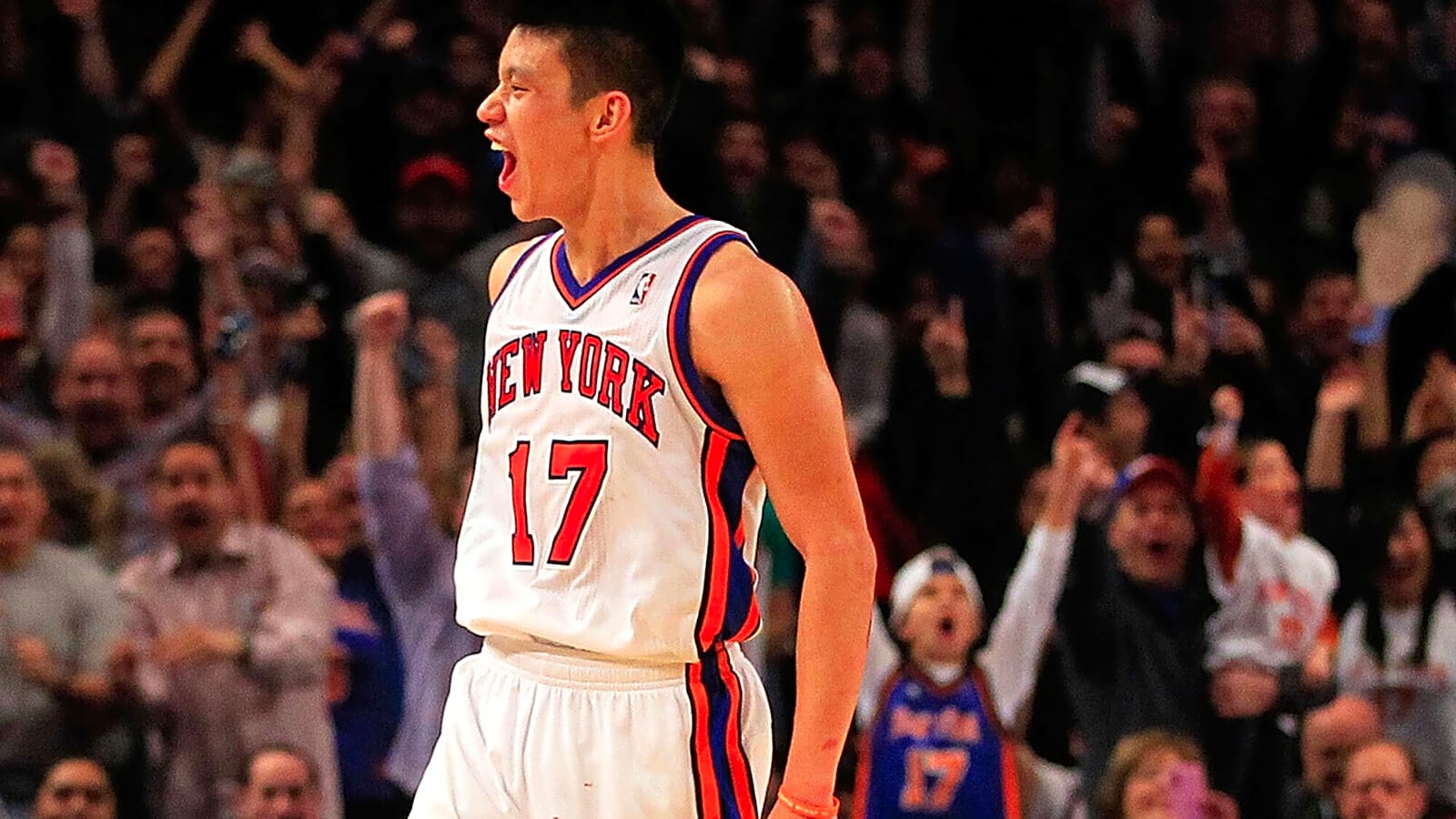
The 25 most memorable NBA one-season wonders
Every NBA player dreams of putting it all together for a full season. For these guys, that dream became reality…once. From explosive scoring outbursts to unlikely All-Star cameos, here are 25 players whose careers are defined by a single, unforgettable year.
Isaiah Thomas, Boston Celtics, 2016-17
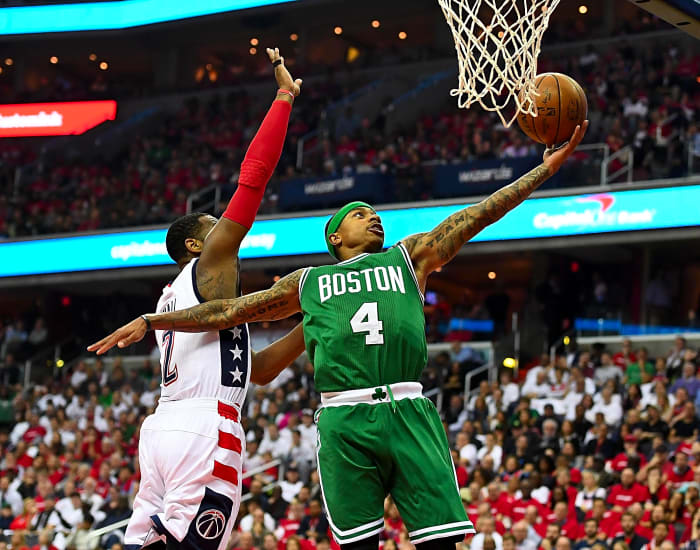
For one incandescent season, Isaiah Thomas became a 4th-quarter wrecking ball, The King of the Fourth: 28.9 PPG, 5.9 APG, and fifth-place in the MVP vote. Unfortunately, the Celtics organization (looking at you, Danny Ainge) did him dirty, and traded him to the Cavaliers in the Kyrie Irving deal instead of paying him, and the hip injury he'd suffered putting his heart and soul on the line for Boston, abruptly knocked his shooting star out of the sky.
Jerry Stackhouse, Detroit Pistons, 2001-01
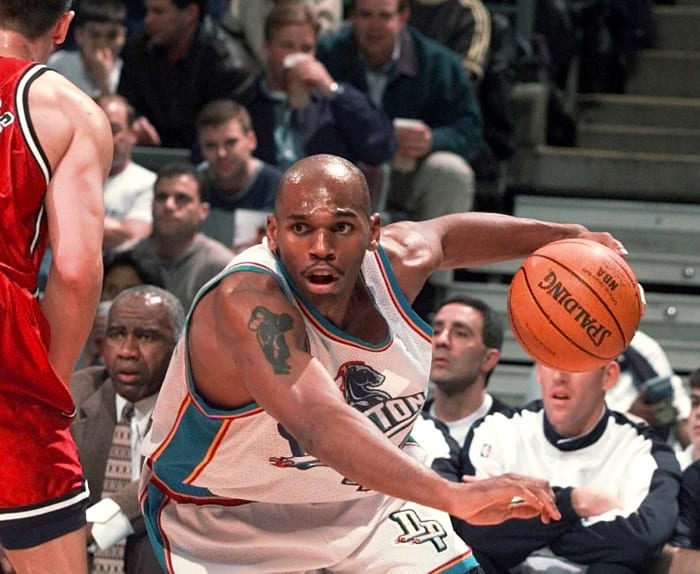
In 2000-01, Jerry Stackhouse averaged 29.8 PPG (second in the NBA), led the NBA in total points, total free throws made, and free throws per game. Stackhouse, who was a two-time All-Star, was a good player, but for one season, he was the league's best scorer and averaged more than six points per game, more than his second-best scoring season (23.6 PPG). What caused this one-year blip? Dig a little deeper, and you'll find that the Pistons were terrible that season (32-50), but led the league in pace, which Stackhouse took full advantage of by also leading the league in shot attempts and turnovers.
Tyreke Evans, Sacramento Kings, 2009-10

In 2009-10, Tyreke Evans took the NBA by storm, winning Rookie of the Year after averaging 20.1 PPG, 5.8 APG and 5.3 RPG. In fact, Evans is one of only five players in NBA history to average 20 points, five assists and five steals as a rookie (along with Oscar Robertson, Michael Jordan, LeBron James and Luka Doncic...decent company!) It would go down as his best season as a professional, as the game of basketball quickly shifted to a pace-and-space style that did not bode well for lead guards who couldn't shoot and didn't have any elite traits.
Dana Barros, Philadelphia 76ers, 1994-95

In 1994-95, Dana Barros won the Most Improved Player award and made his only All-Star appearance while averaging career-highs in PPG (20.6), APG (7.5), RPG (3.3), SPG (1.8) and three-point shooting (46.4 percent). Barros' other two scoring seasons were the years that sandwiched this breakout season, where he scored 13.3 PPG in 1993-94 and 13 PPG in 1995-96. His 94-95 emergence was probably due to the fact that he played 40.5 MPG over 82 games that year, and the fact that Philly finished with the second-worst record in the Eastern Conference...but who cares about that!?!
Aaron Brooks, Houston Rockets, 2009-10
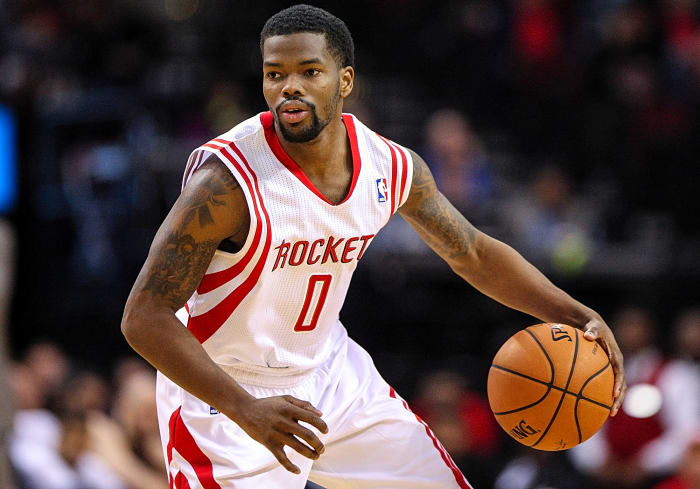
In 2009-10, Aaron Brooks won the Most Improved Player award after averaging 19.6 PPG and 5.3 APG with 43-40-82 shooting splits. He also led the NBA in three-point makes per game (2.6). Brooks was mostly used as a heat-check guard off the bench for his career, averaging between 7.1 PPG and 11.6 PPG during his prime, but for the 2009-10 season. The primary reason for his one-year leap in production was an increase in playing time, as he never played more than 25 MPG in any other season, but in 2009-10, he played 35.6 MPG and started all 82 games.
Jeremy Lin, New York Knicks, 2011-12

It wasn't so much a season, but one of the most unforgettable 11-game stretches in NBA history where Jeremy Lin took New York and the NBA by storm, going from a couch (literally, he was sleeping on a teammate's couch) to averaging 23.9 PPG, 9.2 APG and nailing game-winners and clutch shots against some of the NBA's best teams and players. Though he made a nice career for himself and put up some decent numbers, he could never recreate the magic of "Linsanity".
Michael Beasley, Minnesota Timberwolves, 2010-11

If basketball were an individual sport, or if basketball had a designated hitter position like baseball, or if he simply hadn't been drafted by a franchise located in a city that had the off-the-court temptations like Miami, Michael Beasley might have been a Hall of Fame player. He was that talented a scorer. B-Easy's career got off to a slow start in South Beach, then was slightly revived in Minnesota where he had his best season in 2010-11, averaging 19.2 PPG and 5.6 RPG. The only problem was that he essentially played the same position as the franchise player, Kevin Love, and their playing styles didn't mesh well. The rest of his career was as a bench scorer in short stints. That single season was his best glimpse of stardom.
Hedo Türkoğlu, Orlando Magic, 2007-08

In 2007-08, Hedo Türkoğlu enjoyed a breakout season that earned him the Most Improved Player award and saw him post career-highs in points (19.5), rebounds (5.7) and assists (5.0) per game. As one of the game's top point-forwards, he'd run endless 1–4 pick-and-rolls with Dwight Howard. He never matched that across-the-board prime again once Howard, Rashard Lewis and Jameer Nelson emerged and Hedo became more of a closer
Larry Hughes, Washington Wizards, 2004-05

In 2004-05, Larry Hughes averaged career-highs across the board - 22 PPG, 6.3 RPG, 4.7 APG and a league-best 2.9 SPG. He also made first-team All-Defense - something he never did before or after. In case you were curious, this was a contract year for Hughes, who would parlay the monster season into a big contract with the Cavaliers that offseason. As LeBron James' wingman, Hughes struggle immensely despite being in his athletic prime, averaging only 15.1 PPG, 4 RPG, 3.7 APG and 1.3 SPG with ugly 40-34-71 shooting splits. He was even worse in the 27 playoff games with the Cavs, averaging 11.3 PPG, 3.6 RPG, 3 APG and 1.7 SPG with even more putrid 34-33-75 shooting splits.
Eric Gordon, Los Angeles Clippers, 2010-11

Before the injuries turned him into more of a high-end role player, Eric Gordon looked like a future All-Star, averaging 22.3 PPG and 4.4 APG in just his third season. The next 13 seasons gave us elite spot-up shooting and secondary creation, but never that single-season volume again. It’s a forgotten “what if” from Lob City’s pre-era. Peak-Gordon was a bucket.
Boris Diaw, Phoenix Suns, 2005-06
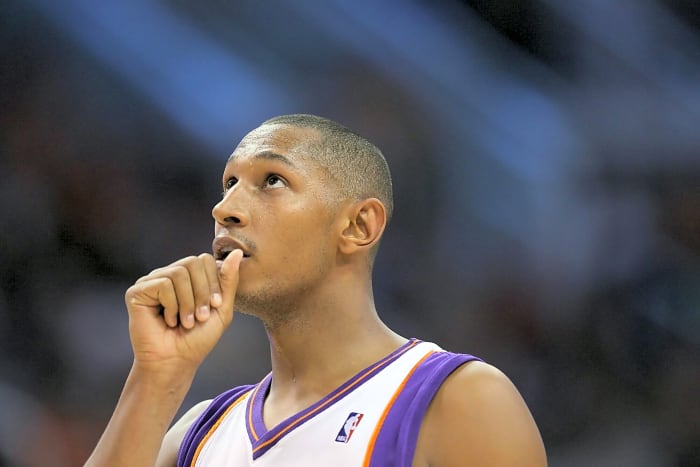
Boris Diaw's 2005-06 season won him the Most Improved Player award and was his peak offensive season, where he developed into an ideal Seven Seconds or Less do-it-all point-center in Mike D'Antoni's system. Though Diaw's numbers weren't overly impressive - 13.3 PPG, 6.9 RPG, 6.2 APG - he was battling his butt off in the paint every night, playing center when his natural position was more like small forward. Though he'd play important roles on other teams in his career, he never quite had a season where his importance and, honestly, his effort on a night-to-night basis were higher.
Michael Adams, Denver Nuggets, 1990-91

In 1990-91, Michael Adams exploded for career-bests in PPG (26.5), APG (10.5) and FTA (8.0). Forget that the Nuggets went 20-62, played at an ineffective breakneck pace, and had a minus-9.6 net rating. Adams was a stat-stuffer all season and deserves recognition here. His next-best seasons in those categories were 18.5 PPG, 7.6 APG, and 5.1 FTA.
Richard Dumas, Phoenix Suns, 1992-93
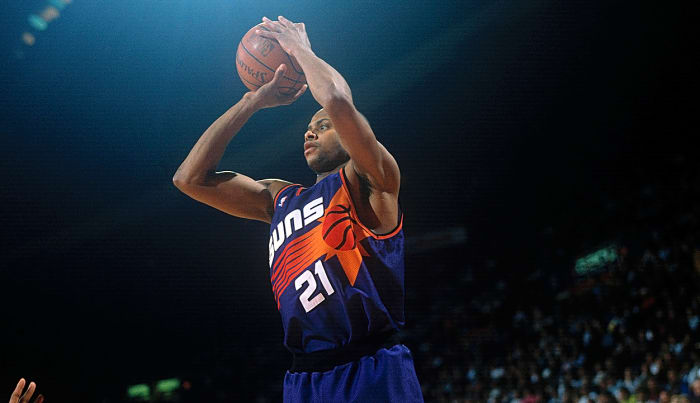
In 1992-93, Richard Dumas had a stellar rookie season, averaging 15.8 PPG and 4.6 RPG for the Western Conference championship Phoenix Suns. Sadly, Dumas, who had already been suspended for an entire 1991-92 season, was suspended for the entire 1993-94 season as well for violating NBA substance abuse policies. He'd play two more unimpressive seasons and was out of the NBA.
Mike James, Toronto Raptors, 2005-06

In 2005-06, 30-year-old journeyman point guard Mike James, who had never scored more than 11.8 PPG, randomly put up 20.3 PPG to go along with a career-best 5.8 APG in 79 games. Not bad for an undrafted player out of Duquesne who didn't make it to the league until he turned 26 years old! This is one of those classic seasons that helps prove the theory that there are so many guys out there who could score 20 PPG if given the chance.
Larry Sanders, Milwaukee Bucks, 2012-13
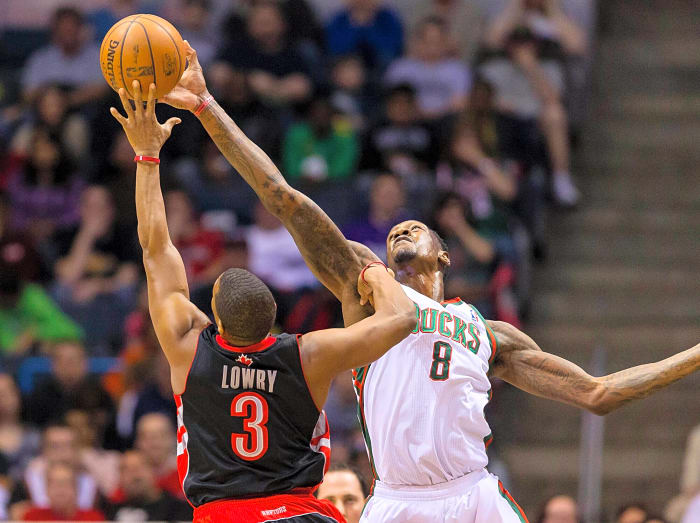
In 2012-13, Larry Sanders was one of the best young big men in the NBA, finishing seventh in Defensive Player of the Year voting, averaging 2.8 BPG along with career-highs in PPG (9.8) and RPG (9.5). Unfortunately, Sanders struggled with off-the-court issues from that point on and never lived up to the potential he flashed during 2012-13. In fact, he was out of the NBA three seasons later despite being in his mid-20s. He'd appear in five games in 2016-17 and then was out of basketball for good, leaving us to forever wonder what could have been for Sanders.
Devonte’ Graham, Charlotte Hornets, 2019-20

Though he wasn't exactly the most efficient shooter, for one season - his second season as a pro - Devonte' Graham was the Hornets' go-to guy and averaged 18.2 PPG and 7.5 APG. It was all downhill from there. The next season, he averaged 14.8 PPG and 5.4 APG; the next 11.9 PPG and 4.2 APG. Three years later, he was out of the NBA. However, for one season, Graham was one of the league’s surprise engines when Charlotte handed him the keys and he floored it. A modern guard blip if there ever was one.
Michael Carter-Williams, Philadelphia 76ers, 2013-14

One could argue that Michael Carter-Williams' first NBA game doubled as the high moment and best game of his entire career - he dropped 22 points, 12 assists, seven rebounds, and nine steals in a win against LeBron James and the defending champion Miami Heat. He'd go on to win Rookie of the Year of an underwhelming rookie class, averaging 16.7 PPG, 6.3 APG, 6.2 RPG and 1.9 SPG. It was all downhill from there—in large part because The Process Sixers were trying to lose, causing MCW and other young players to develop bad habits.
Pervis Ellison, Washington Bullets, 1991-92
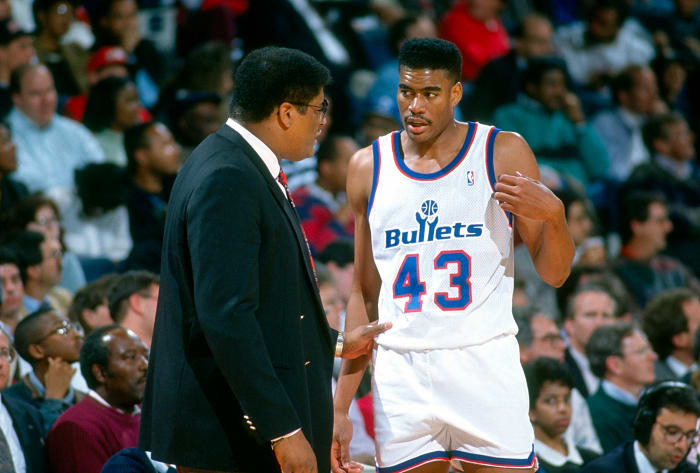
"Never Nervous" Pervis Ellison looked to be a bit of a bust after being selected first overall in the 1989 NBA Draft, averaging 9.7 PPG and 7.1 RPG over his first two seasons. Then, seemingly out of nowhere, he exploded for 20 PPG, 11.2 RPG and 2.7 BPG - all career-highs - in 1991-92, winning the Most Improved Player trophy. Injuries wrecked the rest of his career, and he never came close to performing like that again.
Gheorghe Mureșan, Washington Bullets, 1995-96
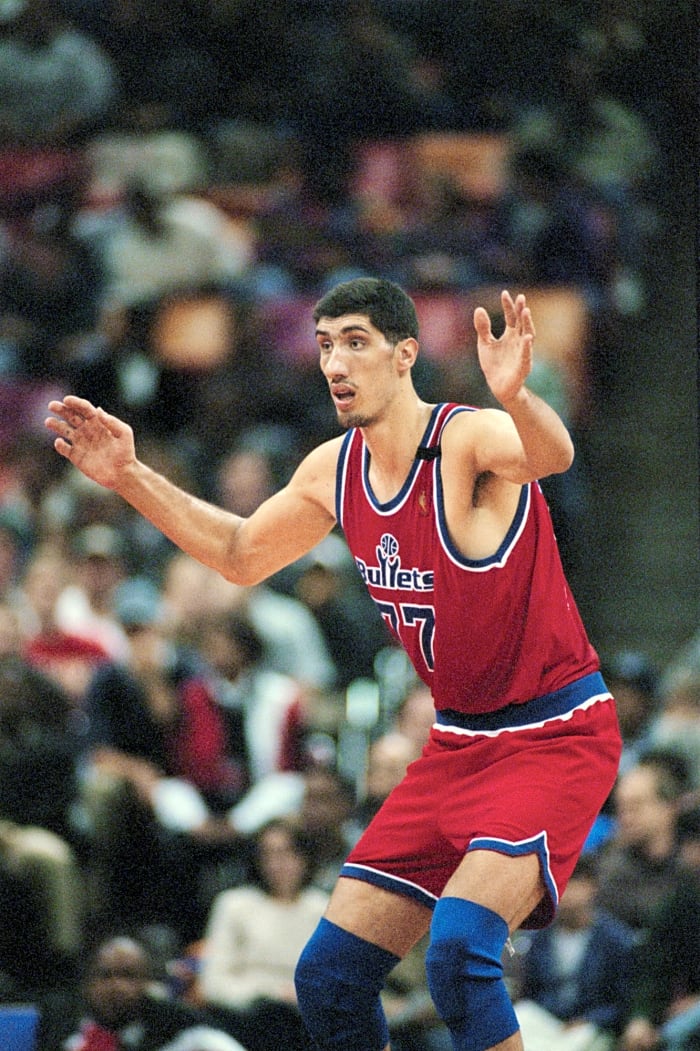
Gheorghe Mureșan, the tallest player in NBA history (tied with Manute Bol), stood 7-foot-7, and enjoyed a strong 1995-96 campaign that saw him lead the NBA in field goal percentage (58.4), average 14.5 PPG, 9.6 RPG and 2.3 BPG, and win the Most Improved Player award. (As an aside, the Bullets either had the league's best PR team or the league's best player development coaches because they had three Most Improved Player winners between 1991-92 and 1995-96.) As with many giant NBA players, injuries derailed Mureșan's once promising career shortly after his breakthrough.
Ömer Aşık, Houston Rockets, 2012-13
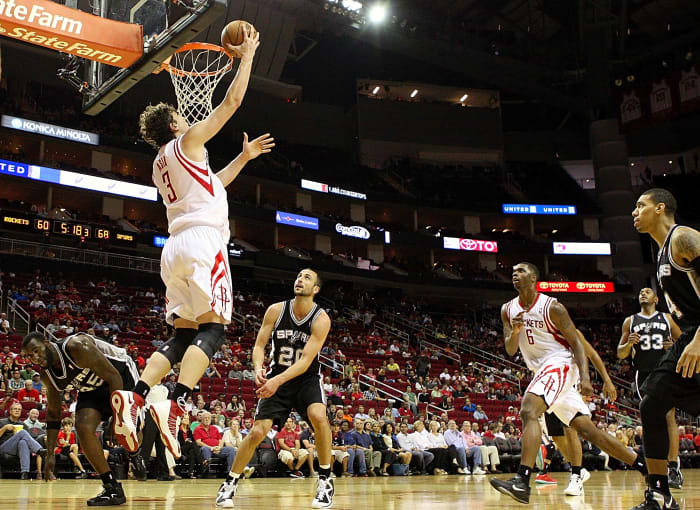
Ömer Aşık is up there with Chuck Hayes and PJ Tucker as Daryl Morey Hall-of-Famers. The current head executive of the Philadelphia 76ers and then-Houston Rockets saw something in the Bulls' reserve center ahead of the 2012 summer and signed Asik to a then-massive three-year, $25M contract to be the Rockets' starting center despite having only averaged 2.9 PPG and 4.4 RPG in his first two seasons. And it kind of worked - at least, for the 2012-13 season - as Asik averaged 10.1 PPG and 11.7 RPG while starting all 82 games for the playoff-bound Rockets. Unfortunately for Asik, the Morey signed Dwight Howard the following summer and he shifted back into being an end of the bench guy the remainder of his career.
Tony Campbell, Minnesota Timberwolves, 1989-90
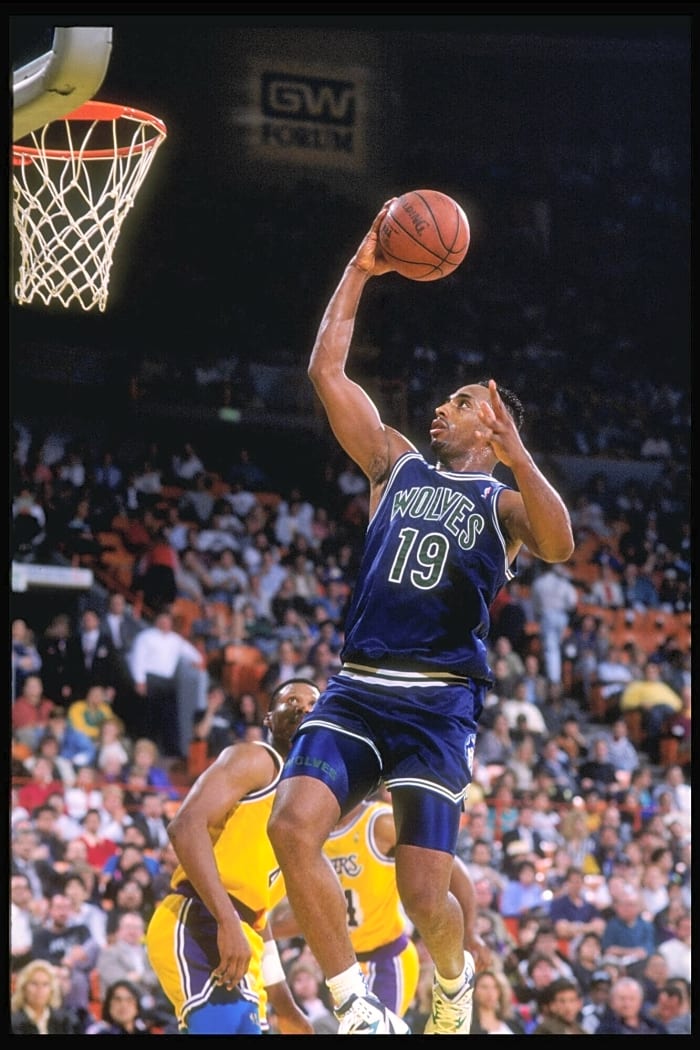
In the Timberwolves' first year of expansion, they were pretty putrid, going 22-60. But as a result of having a bad roster, Tony Campbell got to be a go-to guy for a couple of season. In 1989-90, he delivered 23.2 points per game out of nowhere. His previous career-high had been 11 PPG. And while he averaged a less efficient 21.8 PPG the following season, Campbell's '89-90 season will always be a random scoring aberration.
Don MacLean, Washington Bullets, 1993-94
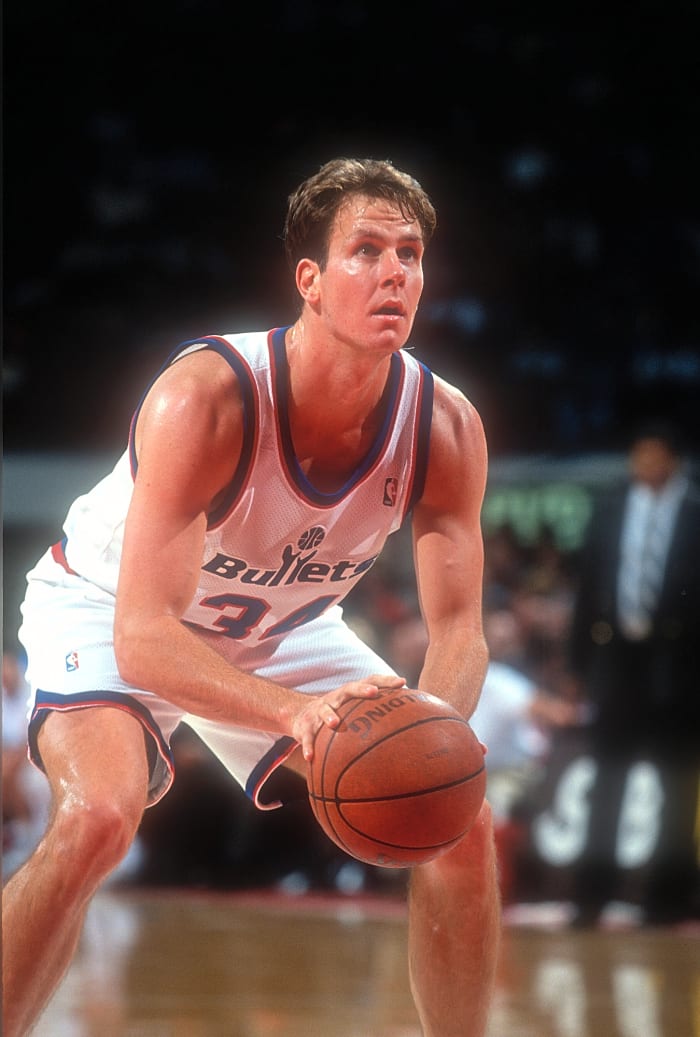
Who? Even I must admit that I was unfamiliar with Don MacLean before this exercise. The Bullets' forward enjoyed a huge sophomore campaign in 1993-94, averaging 18.2 PPG and 6.2 RPG in the Capitol, winning Most Improved. He never consistently scored in double digits after that. A one-year green light produced his only real claim to fame.
Alan Henderson, Atlanta Hawks, 1997-98
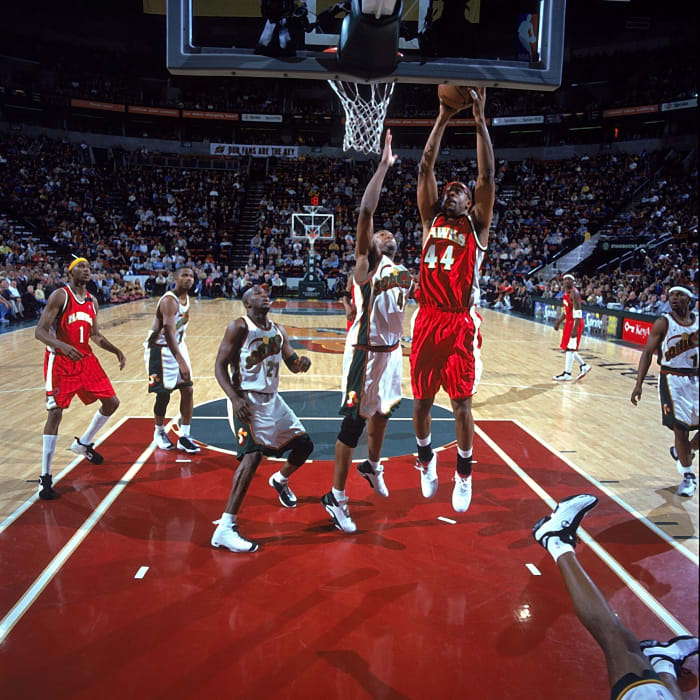
Yet another recipient of the Most Improved Player award, Alan Henderson averaged 14.3 PPG and 6.4 RPG on a 50-win Hawks team during the 1997-98 season. Known more as a defensive player, who could defend forwards and some centers, Henderson was never really able to match this kind of offensive production on a successful team.
Carlos Arroyo, Utah Jazz, 2003-04
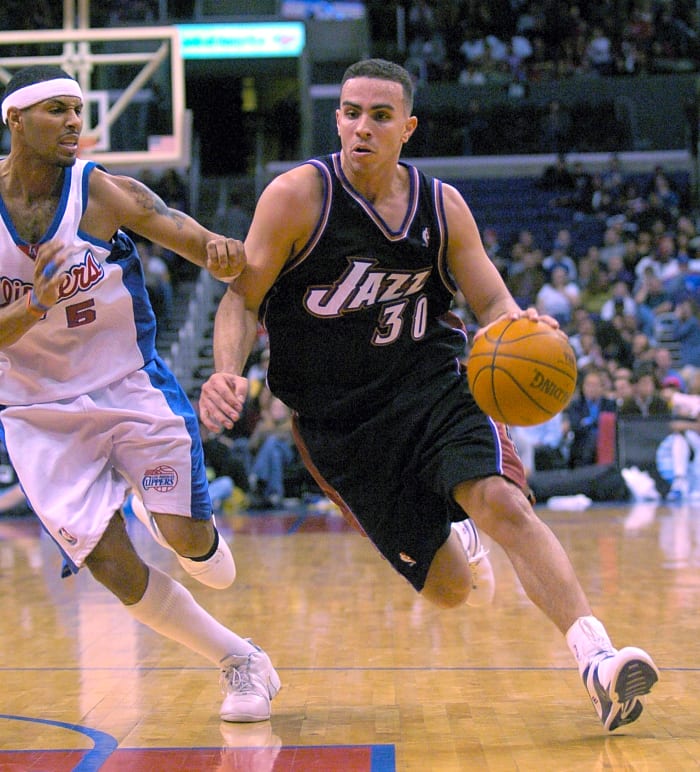
Carlos Arroyo went from fringe rotation guard to a full-time starter almost overnight in Utah. In 2003-04, he averaged 12.6 points and 5.0 assists on 44% shooting, starting 71 games and playing over 30 minutes a game. For a minute, he was the Puerto Rican version of John Stockton, running Jerry Sloan’s offense with confidence and flair. But it turned out to be a blip—he never started more than 35 games in any other season, and his averages fell back to single digits for the rest of his NBA career.
Greg Oden, Portland Trail Blazers, 2009-10
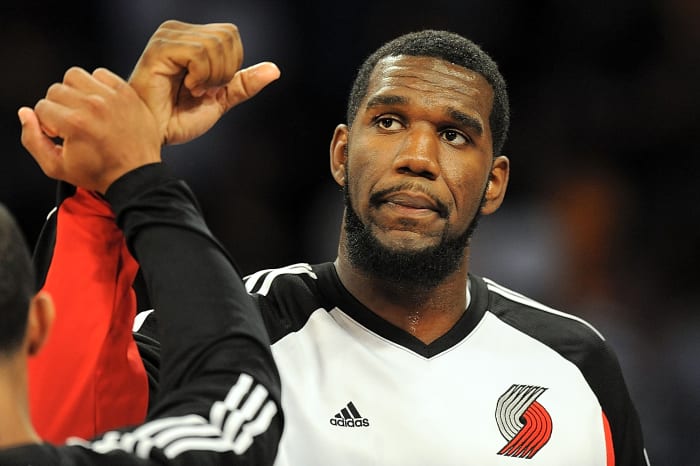
Greg Oden was supposed to be his generation's Patrick Ewing, but sadly had his entire career and - for a while - his life derailed by injuries. The former No. 1 pick only had one healthy-ish season in the NBA, and it hinted at the force he could have been. In his second season, 2009-10, he was averaging 11.1 PPG, 8.5 RPG and 2.3 BPG while converting shots at 60.5 percent from the field. Unfortunately, 21 games into the season, he suffered a knee injury that effectively ended his career as he would miss the next three seasons before having a brief, 23-game stint in Miami in 2013-14. He retired from basketball after that, becoming one of the biggest "What Ifs" in NBA history.
More must-reads:
- Zion Williamson already out for Pelicans' third game with injury
- Wolves star Anthony Edwards to miss time with hamstring strain
- The 'Most 2,000-point NBA seasons' quiz
Breaking News
Trending News
Customize Your Newsletter
 +
+
Get the latest news and rumors, customized to your favorite sports and teams. Emailed daily. Always free!
PRIVACY POLICY EDITORIAL POLICY CONTACT US
ABOUT YARDBARKER TERMS OF SERVICE
Use of this website (including any and all parts and
components) constitutes your acceptance of these
Terms of Service and Privacy Policy.
This site is for entertainment purposes only.
There is no gambling offered on this site.
Gambling Problem? Call 1-800-Gambler.





